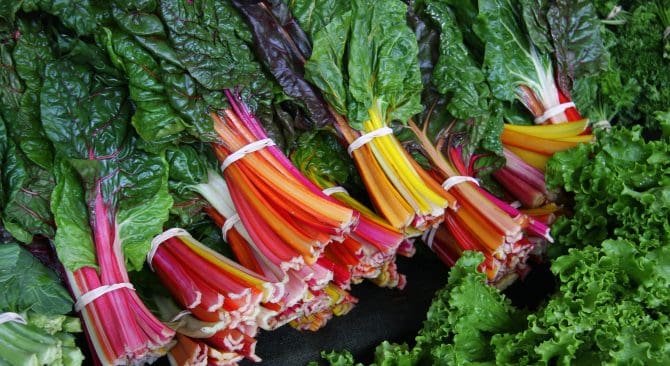
When to plant?
Cool and mild weather is preferred, though chard has some heat tolerance. Seeds germinate in soil temperatures from 40–100°F (5–38°C) with an optimum of 86°F (30°C). Seedlings will tolerate light frosts, and mature plants will tolerate moderate frosts. Some varieties may experience bolting pressure if seedlings are exposed to prolonged temperatures in the low 50s or below. Swiss chard may overwinter in mild areas. Suitable for production year-round, but somewhat less frost-hardy than other chards.
How to plant?
Bunching: Sow about 6 seeds/ft., 1/2" deep, rows 12–18" apart from midspring and on into midsummer (fall where winter is mild). Thin to 4–6" apart for larger leaves.
Baby Leaf: Sow 1/4– 1/2" deep at 1–2 seeds/inch in rows at least 2" apart from midspring into late summer (fall where winter is mild). Planting too densely can lead to overcrowding and stunted growth. When planting more seeds per inch, be sure to plant rows farther apart.
Extra info?
Chard is quite cold-hardy. Although it's officially our June seed and less frost hardy than other chard varieties, you can plant it quite early in the spring (or start seedlings indoors) and also plant a second crop in late summer that will extend your harvest into early fall.
How to harvest?
Bunching: Cut or snap mature leaves individually. New leaves will grow for multiple harvests.
Baby Leaf: Harvest with a knife when leaves reach desired size, about 3–6". Cut about an inch above the soil to allow for clean regrowth, making sure to cut above the basal plate. Cut again when leaves reach desired size.
How do you save the seeds?
BONUS FUN FACTS!
- Swiss chard and beets share the same classification: Beta vulgaris. Though beet greens are delicious, beets are usually cultivated for their roots while Swiss chard is cultivated for its leaves.
- Surprisingly, Swiss chard did NOT originate in Switzerland. Swiss chard’s place of origin is Sicily, Italy. Legend has it that a Swiss botanist was responsible for determining the scientific name and ‘Swiss’ stuck.
(source: freshcityfarms.com)
For more info, visit Johnny’s Selected Seeds



